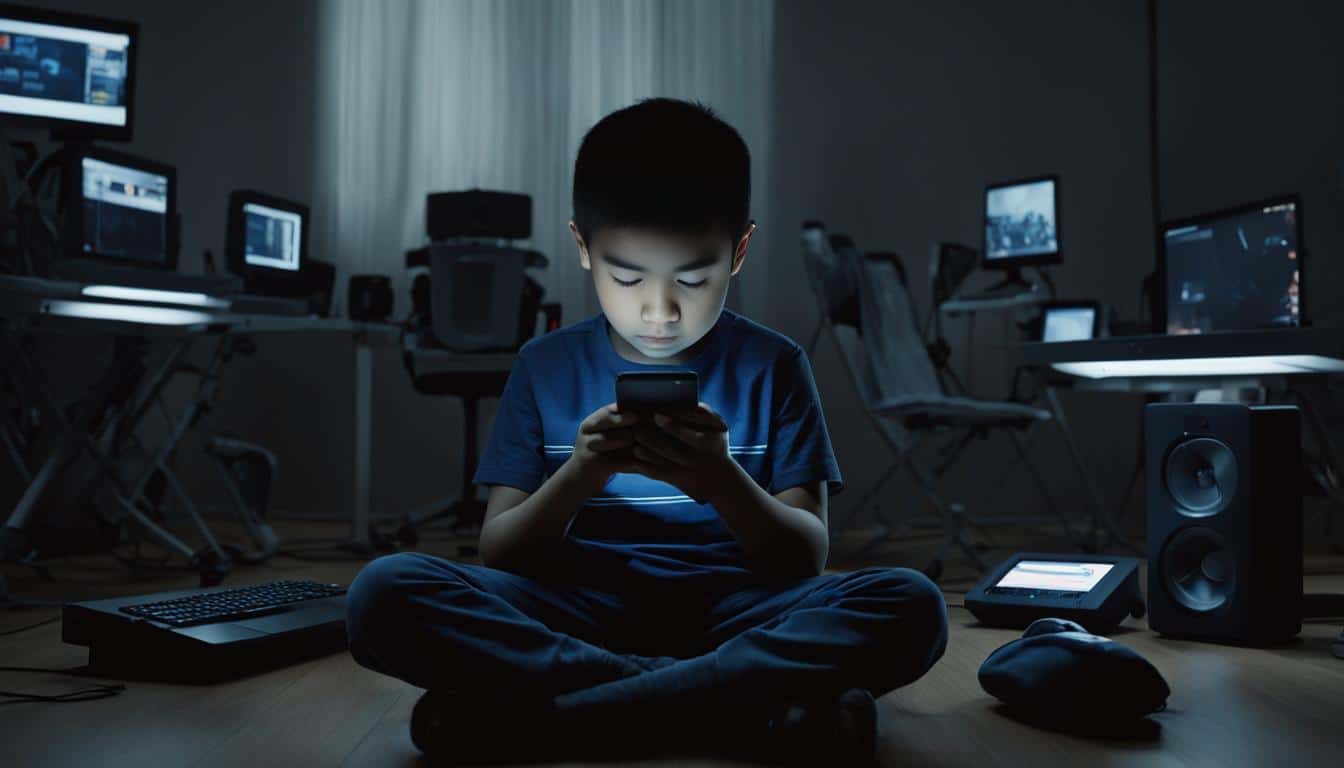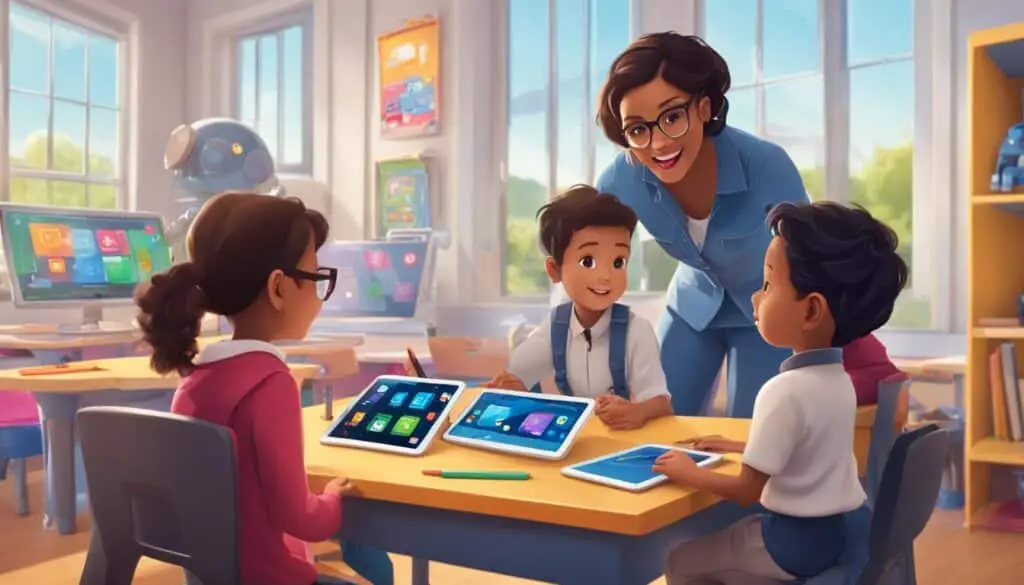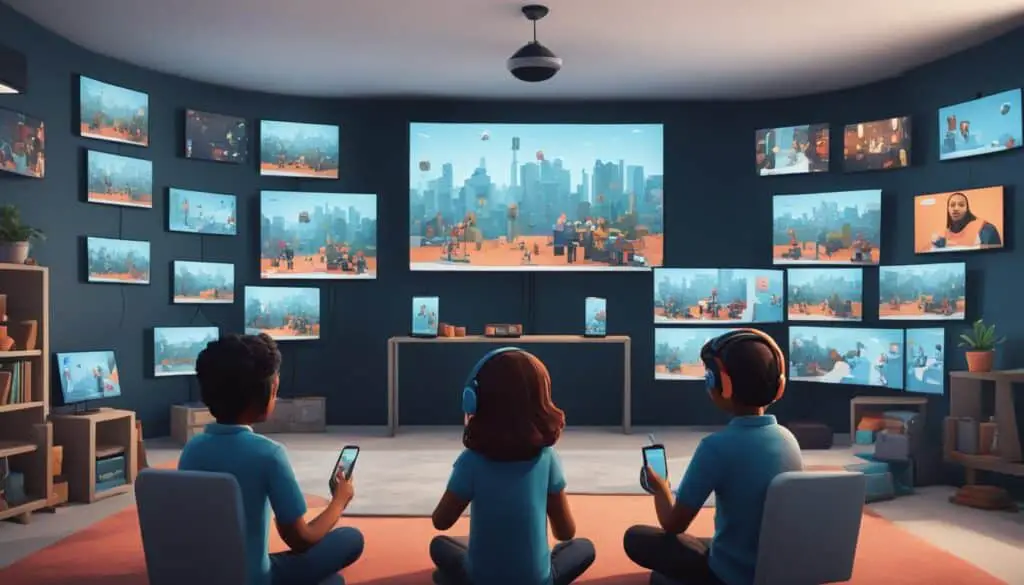
The Impact of Technology on Child Development: A Modern Perspective
Technology has revolutionized the way we live, work, and interact with the world around us. From smartphones to social media, technology has become an integral part of our daily lives. However, the impact of technology on child development is a topic that has sparked widespread debate and controversy in recent years. As a journalist, I explore the effects of technology on children’s cognitive, physical, and socio-emotional development, and offer insights on how to harness technology for positive outcomes.
Key Takeaways
- Technology has a significant impact on child development, affecting cognitive, physical, and socio-emotional growth.
- Excessive screen time can have adverse effects on children’s health, social skills, and academic performance.
- Technology can also be leveraged to enhance learning experiences, creativity, and healthy lifestyles.
- Parental guidance is crucial in shaping children’s technology use and fostering responsible digital citizenship.
- A balanced approach to technology use, mindful digital literacy, and open communication are essential for promoting optimal child development outcomes.
Understanding Screen Time and Its Consequences
In today’s digital age, screen time has become an inevitable part of children’s lives. However, excessive screen time can have detrimental effects on child development. Research suggests that prolonged screen exposure is associated with delayed cognitive development, poor physical health, and weakened social skills.
Excessive screen time affects every aspect of child development.
The Effects of Screen Time on Cognitive Development
Children exposed to excessive screen time may experience delays in cognitive development. Studies have linked screen time to poor language skills, decreased attention span, and delayed problem-solving abilities. Furthermore, excessive screen time can negatively impact memory and executive functioning skills, which are crucial for academic success.
The Effects of Screen Time on Physical Health
Extended screen time has also been linked to a host of physical health problems, including obesity, poor sleep, and eye strain. Children who engage in excessive screen time tend to be more sedentary, which puts them at a higher risk of weight gain and related health problems. Additionally, the blue light emitted by screens can interfere with sleep patterns and cause eye strain, leading to potential long-term vision problems.
The Effects of Screen Time on Social Skills
Screen time can have detrimental effects on social skills development as well. Children who spend excessive amounts of time on screens tend to have poorer communication skills and may struggle with face-to-face interactions. This can lead to social isolation and reduced empathy development, which can impact relationships later in life.
A balanced approach to screen time is essential for healthy child development.
Age-Appropriate Screen Time Guidelines
It is essential for parents to establish age-appropriate screen time limits to promote healthy child development. The American Academy of Pediatrics recommends no screen time for children under the age of 18 months, with screen time limited to one hour per day for children between 18 and 24 months. For children ages 2 to 5, screen time should be limited to one hour per day of high-quality programming, with adults co-viewing and discussing the content with them. For children ages 6 and older, parents should set consistent limits on the amount and type of screen time allowed, prioritizing vigorous physical activity and face-to-face social interactions.
Best Practices for Parents
Parents can play a crucial role in promoting healthy screen time habits for their children. It is essential to model healthy screen time habits by limiting personal device use and prioritizing face-to-face interactions. Additionally, parents should establish clear and consistent rules for screen time use, encourage physical activity, and emphasize the value of direct communication and socialization.
Technology in Education: Boon or Bane?
With the advent of technology, the education sector has undergone significant changes in recent years. Technology offers numerous benefits that can enhance the learning experience and improve educational outcomes for students. However, there is also a concern regarding the overreliance on technology in the classroom, which may hinder students’ cognitive development and social skills.
Despite these concerns, many educators believe that technology can be a valuable tool in the classroom when used appropriately. For instance, educational apps and interactive tools can help students to develop critical thinking, problem-solving skills, and creativity. Technology can also provide access to a wealth of information and resources that might not be available in traditional classroom settings.
When properly integrated into the curriculum, technology can offer an engaging and personalized learning experience for students. For example, incorporating video lectures, podcasts, and online discussion forums can help students stay connected with the course material and interact with their peers and instructors.
However, it’s essential to strike a balance between using technology and traditional teaching methods. Overreliance on technology in the classroom may result in students becoming overly dependent on devices, leading to the neglect of essential social skills development and cognitive abilities.
The Impact of Technology on Child Development
Research shows that the overuse of technology can have a negative impact on children’s cognitive, socio-emotional, and physical development. Exposure to excessive screen time can lead to difficulties with attention, memory, and the ability to focus and concentrate. Furthermore, excessive technology use has been linked to sleep problems and obesity in children.
That being said, the use of technology in education can foster positive child development outcomes. When integrated appropriately, technology can enhance cognitive development, aid in the development of socio-emotional skills, and promote physical activity and healthy lifestyles.

“The use of technology in education must be approached with caution, and educators should prioritize a balanced approach to technology use.”
The Need for a Balanced Approach
Appropriate technology integration in the classroom requires a balanced approach, considering both the potential benefits and risks. Educators and parents must work together to establish ground rules and appropriate boundaries for technology use. Furthermore, educators should ensure that technology use aligns with the curriculum and supports students’ learning outcomes.
Overall, while technology presents many benefits for the education sector, educators must approach its use with caution and prioritize a balanced approach. When used appropriately and effectively, technology can offer exciting opportunities for enhanced learning experiences and improved educational outcomes for students.
Social Skills in the Digital Age
The advent of technology has revolutionized the way we interact with each other, including how we develop social skills. With digital communication platforms becoming increasingly prevalent, children’s face-to-face interactions, empathy, and socialization skills may be impacted in various ways. It is important to understand the interplay between technology and social skills development to promote healthy relationships and prevent potential negative consequences.
Research suggests that excessive technology use can lead to reduced face-to-face communication skills, making it challenging for children to read social cues, express emotions, and develop empathy. Additionally, digital interactions may promote a culture of anonymity, which can lead to online harassment and bullying.
To promote healthy social skills development in the digital age, parents and educators can take various steps such as:
- Encouraging children to engage in outdoor activities and face-to-face interactions
- Facilitating meaningful conversations that foster empathy and emotional intelligence
- Teaching digital etiquette and responsibility
- Monitoring online activities and intervening when necessary
Overall, it is crucial to find a balance between technology use and healthy social skills development. By paying attention to the interplay between technology and socialization, we can foster healthy relationships and prevent potential negative consequences.

Harnessing Technology for Positive Child Development
The use of technology has become an integral part of modern life and presents both opportunities and challenges for child development. Educational apps, interactive tools, and digital platforms can offer a unique and engaging platform to encourage children’s cognitive, socio-emotional, and physical development.
Many studies have demonstrated that using technology in education can enhance learning, creativity, and critical thinking skills. For example, Khan Academy Kids is an interactive educational app that offers a wide range of engaging activities for children to learn math, science, and language.
How can technology contribute to positive child development?
| Technology | Benefits for Child Development |
|---|---|
| Khan Academy Kids | Enhances cognitive skills, imagination, and learn new languages. |
| CodeSpark Academy | Encourages critical thinking, problem-solving, and creativity. |
| ZooMoo | Supports cognitive development, nature exploration, and learn about animals. |
CodeSpark Academy is another educational app that offers game-based learning experiences for children to strengthen critical thinking skills and encourage creativity. Similarly, ZooMoo provides an interactive platform for children to explore nature and learn about animals.
Moreover, technology can promote physical activity and healthy lifestyles. For example, GoNoodle offers interactive videos that encourage children to exercise and improve their physical health.
It is crucial to note that technology should be used wisely to promote positive child development. Parents need to choose age-appropriate apps and interactive tools, monitor their children’s screen time, and encourage physical activities and social interactions.
“By embracing technology as a tool for positive child development, we can propel education and learning to new heights.”
Navigating the Challenges: Parental Guidance and Digital Citizenship
Parental guidance and digital citizenship play a crucial role in shaping children’s technology use. As parents, it is our responsibility to ensure our children have a healthy relationship with technology by setting boundaries, rules, and promoting responsible behavior. Here are some practical tips to help navigate the challenges of raising digital citizens:
- Establish healthy technology boundaries: Set limits on screen time, prioritize non-digital activities, and promote a healthy balance between online and offline experiences. Use parental controls and monitoring tools to ensure your child stays safe online.
- Set clear rules: Establish rules for device use, social media engagement, and online behavior. Make sure your child understands the consequences of violating the rules and follow-through with consistent consequences.
- Promote responsible digital citizenship: Teach your child about online safety, privacy, and ethical behavior. Encourage positive interaction with others online and emphasize the importance of treating others with respect.
- Open communication: Encourage your child to share their online experiences with you. Be open and non-judgmental, and help your child navigate any challenges they may face online.
- Foster a safe and supportive digital environment: Create a tech-friendly environment that encourages creativity, learning, and exploration. Discuss technology use with other parents and role-model responsible digital behavior.
By implementing these tips, we can ensure our children develop healthy digital habits and become responsible digital citizens.
Conclusion
In conclusion, the impact of technology on child development is a complex issue that requires careful consideration. As I have discussed in this article, technology can have both positive and negative effects on cognitive, physical, and social development. Therefore, it’s essential to adopt a balanced approach to technology use and promote responsible digital citizenship.
Parents play a crucial role in guiding their children’s technology use and fostering healthy digital habits. By establishing clear rules, encouraging open communication, and modeling responsible technology use, parents can help their children navigate the digital landscape safely and confidently.
Additionally, educators have a responsibility to provide students with age-appropriate and effective technology tools to enhance learning outcomes. However, educators must also be mindful of the potential consequences of excessive technology use and promote a balanced approach to technology integration in the classroom.
Overall, the impact of technology on child development will continue to be an important topic of discussion in the coming years. As we navigate the benefits and risks of technology use, let us remember to prioritize the well-being and development of our children and foster digital literacy and mindful technology use.
FAQ
What is the impact of technology on child development?
The impact of technology on child development is a complex issue. While technology can provide educational and entertainment opportunities, excessive screen time and reliance on digital devices can negatively affect cognitive, physical, and social development in children.
What are the consequences of excessive screen time?
Excessive screen time can have various consequences on child development. It can interfere with cognitive development, impair physical health, and hinder the development of social skills. It is important for parents to set age-appropriate screen time limits and monitor the content children are exposed to.
How does technology influence education and child development?
Technology has the potential to enhance education and improve child development outcomes. It can provide access to vast resources, personalized learning experiences, and interactive tools. However, overreliance on technology in the classroom may pose challenges and should be balanced with other forms of learning.
What is the impact of technology on social skills development?
The prevalence of digital communication platforms can impact social skills development in children. Excessive use of technology may limit face-to-face interactions, decrease empathy, and hinder socialization skills. Parents should encourage a balance between online and offline interactions to promote healthy social skills.
How can technology be harnessed for positive child development?
Technology can be harnessed to facilitate positive child development. Educational apps, interactive tools, and digital platforms can enhance cognitive, socio-emotional, and physical development. They can support learning, creativity, and the adoption of healthy lifestyles when used mindfully and in moderation.
What role does parental guidance play in technology use?
Parental guidance is crucial in shaping children’s technology use. Establishing healthy boundaries, setting rules, and promoting responsible digital citizenship are essential. Open communication, monitoring online activities, and fostering a safe digital environment are vital in ensuring children’s well-being and optimal technology use.
What should be considered for a balanced approach to technology use?
A balanced approach to technology use involves considering both the benefits and risks. It is important to promote digital literacy, mindful technology use, and to encourage a healthy balance between screen time and other activities such as physical exercise, face-to-face interactions, and creative play.